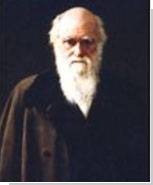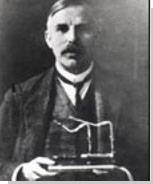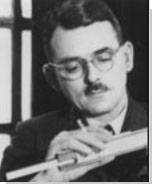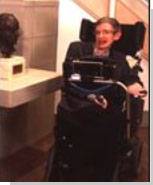| ——Science through centuries
from Newton to Hawking
From Isaac Newton to Stephen Hawking, the University
of Cambridge has earned an unrivalled reputation for scientific
achievement. This passage introduces some of the people
who have contributed to this tradition of excellence.
 Isaac
Newton (1642-1727) Isaac
Newton (1642-1727)
Sir Isaac Newton was probably the greatest mathematician
and physicist of all time. He arrived at Cambridge in 1661,
became a fellow of Trinity College in 1667 and was appointed
Lucasian Professor of Mathematics in 1669. He firmly established
the University's unrivalled reputation for mathematics and
astronomy that is maintained today by the current Lucasian
Professor, Stephen Hawking.
Newton's scientific discoveries were momentous. His groundbreaking
work on calculus underpins all modern scientific activity.
Other remarkable legacies include the invention of the first
reflective telescope, as well as his celebrated insights
into gravity and the operation of planetary forces.
Darwin (1809-1882)
 As an undergraduate at Christ's College, Darwin was more
interested in collecting beetles than studying for his degree
in Theology. During this time he became friendly with John
Stevens Henslow, Professor of both Minerology and Botany,
who encouraged Darwin's interest in natural history and
subsequently arranged for him to be appointed naturalist
on HMS Beagle.
As an undergraduate at Christ's College, Darwin was more
interested in collecting beetles than studying for his degree
in Theology. During this time he became friendly with John
Stevens Henslow, Professor of both Minerology and Botany,
who encouraged Darwin's interest in natural history and
subsequently arranged for him to be appointed naturalist
on HMS Beagle.
Darwin's experiences on the Beagle and particularly his
observations of fossils
in South America, led him to formulate
the principle of natural selection. He worked on this revolutionary
idea in secret for twenty years, before publishing On the
Origin of Species in 1859.
Thomson (1871-1937)
 In
1895, JJ Thomson, discoverer of the electron, appointed
a young Ernest Rutherford as one of his first graduate students
at the Cavendish Laboratory. In 1898 Rutherford left Cambridge
and spent the next twenty years establishing a world-class
reputation with his pioneering work on the structure of
the atom. In 1919 he was the obvious choice to take over
from Thompson at the Cavendish, where he created an outstanding
team of scientists who furthered his work in nuclear physics. In
1895, JJ Thomson, discoverer of the electron, appointed
a young Ernest Rutherford as one of his first graduate students
at the Cavendish Laboratory. In 1898 Rutherford left Cambridge
and spent the next twenty years establishing a world-class
reputation with his pioneering work on the structure of
the atom. In 1919 he was the obvious choice to take over
from Thompson at the Cavendish, where he created an outstanding
team of scientists who furthered his work in nuclear physics.
Many groundbreaking discoveries emerged from the Cavendish
under Rutherford's direction, in particular Chadwick's work
on the neutron. In 1932, John Cockcroft and Ernest Walton
first split the atom.
Whittle (1907-1966)
 Whittle
was only 21 when he first mentioned his idea of turbo-jet
flight to his employers at the Air Ministry. They did not
show any interest and a patent
he had taken out lapsed, as he did not have the funds to
renew it. However, in 1934 the RAF sent him to Peterhouse
as a mature student where his new ideas were encouraged. Whittle
was only 21 when he first mentioned his idea of turbo-jet
flight to his employers at the Air Ministry. They did not
show any interest and a patent
he had taken out lapsed, as he did not have the funds to
renew it. However, in 1934 the RAF sent him to Peterhouse
as a mature student where his new ideas were encouraged.
When he left Cambridge, having obtained a first in Mechanical
Sciences, he set up a company called Power Jets to develop
his jet engine. The first test flight took place on 15 May
1941, and lasted seventeen minutes, having achieved a top
speed of 370 mph.
Hawking (1942-)
 Stephen
Hawking, the current Lucasian Professor of Mathematics,
has captured popular imagination with his research into
the fundamental laws governing the Universe, in particular
his 'Big Bang' theory and his conjecture that the Universe
has no beginning or end. Stephen
Hawking, the current Lucasian Professor of Mathematics,
has captured popular imagination with his research into
the fundamental laws governing the Universe, in particular
his 'Big Bang' theory and his conjecture that the Universe
has no beginning or end.
Hawking carries on a tradition that stretches back through
the centuries to Isaac Newton, who shared many of the same
preoccupations with mathematical and astronomical theory.
As a fellow of Gonville and Caius, Hawking is also maintaining
his college's reputation for scientific discovery, started
in the sixteenth century by William Harvey when he described
how blood circulates round the human body.
↑TOP (558
words)
|